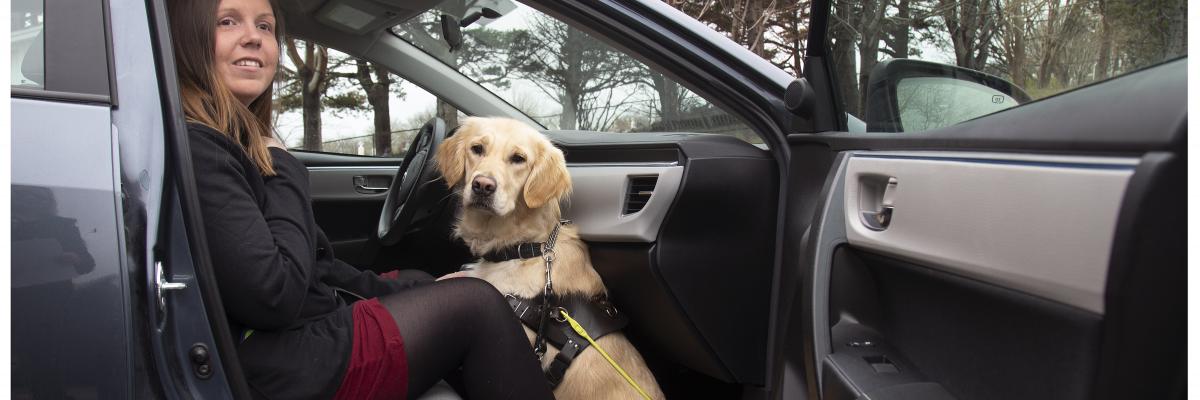By Victoria Nolan, Head, Stakeholder Relations & Community Engagement
At a recent education session about transporting guide dogs in vehicles, taxi and rideshare drivers were given an opportunity to speak with guide dog handlers. The most common questions were: ‘Will the guide dog climb onto the front seat?’ ‘How do I help a guide dog handler bring their dog into the taxi?’ ‘What if the dog is barking?’
When a handler enters a taxi, their dog lies on the floor at the handler’s feet. The dog will not climb up on the seats or move around but stays on the floor until it leaves the car at the end of the ride. Guide dogs are under the control of their handler; therefore, the dog will not bark and the driver doesn't need to provide direction.
In fact, it’s best for the driver to ignore the dog so it doesn’t become distracted. Guide dogs have an important job to do and should be respected as such.
In all provinces and territories, legislation prohibits denying a ride to a person who is blind or partially sighted because they are accompanied by a guide dog.
Despite this legislation, guide dog handlers are often denied access to taxis and rideshares, which can be attributed to a general lack of education and understanding among service providers.
CNIB is now offering presentations to taxi and rideshare companies about transporting guide dog teams safely. The presentation outlines the extensive training and rigorous testing guide dogs go through before they're partnered with their handlers. It also provides information about the driver’s role in transporting guide dog teams.
For more information, contact guidedogs@cnib.ca.
